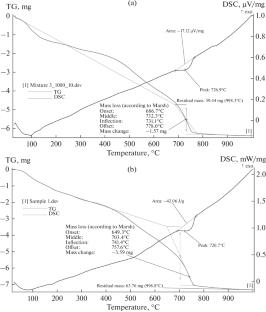黏土与脱砷饼陶瓷样品的矿物组成
IF 0.6
4区 工程技术
Q4 ENGINEERING, CHEMICAL
引用次数: 0
摘要
以克拉斯诺亚尔斯克粘土和Tuvacobalt采矿和加工厂污泥堆中的脱砷饼的混合物为基础,获得了一种陶瓷材料。由于在850℃下烧制,在含有粘土和饼的陶瓷样品中形成了新的相麻石。陶瓷样品的组成还包括石英和斜长石(钠长石)相。以克拉斯诺亚尔斯克粘土和脱砷饼为基体的陶瓷样品在850℃下烧制,强度达到37.4 MPa。本文章由计算机程序翻译,如有差异,请以英文原文为准。

Mineral Composition of a Ceramic Sample Based on Clay and Dearsenification Cake
A ceramic material was obtained based on a mixture of Krasnoyarsk clay and dearsenization cake from the sludge dumps of the Tuvacobalt Mining and Processing Plant. As a result of firing at 850°C, a new phase—nepheline—formed in the ceramic sample containing clay and cake. The composition of the ceramic sample also includes quartz and plagioclase (albite) phases. The ceramic sample based on Krasnoyarsk clay and dearsenization cake, fired at 850°C, exhibits sufficiently high strength, reaching 37.4 MPa.
求助全文
通过发布文献求助,成功后即可免费获取论文全文。
去求助
来源期刊
CiteScore
1.20
自引率
25.00%
发文量
70
审稿时长
24 months
期刊介绍:
Theoretical Foundations of Chemical Engineering is a comprehensive journal covering all aspects of theoretical and applied research in chemical engineering, including transport phenomena; surface phenomena; processes of mixture separation; theory and methods of chemical reactor design; combined processes and multifunctional reactors; hydromechanic, thermal, diffusion, and chemical processes and apparatus, membrane processes and reactors; biotechnology; dispersed systems; nanotechnologies; process intensification; information modeling and analysis; energy- and resource-saving processes; environmentally clean processes and technologies.

 求助内容:
求助内容: 应助结果提醒方式:
应助结果提醒方式:


